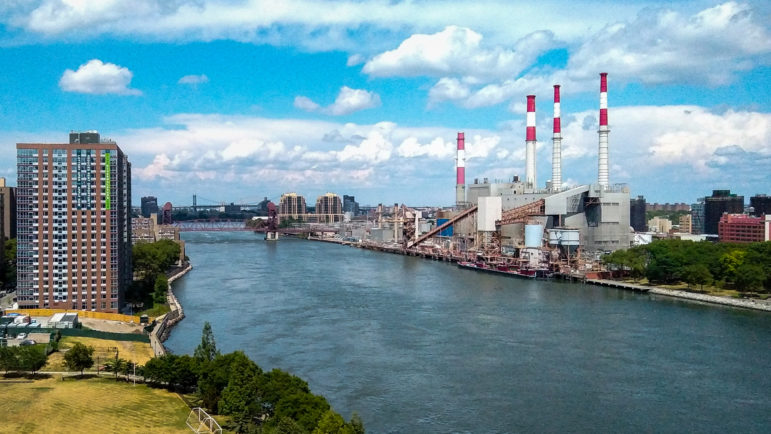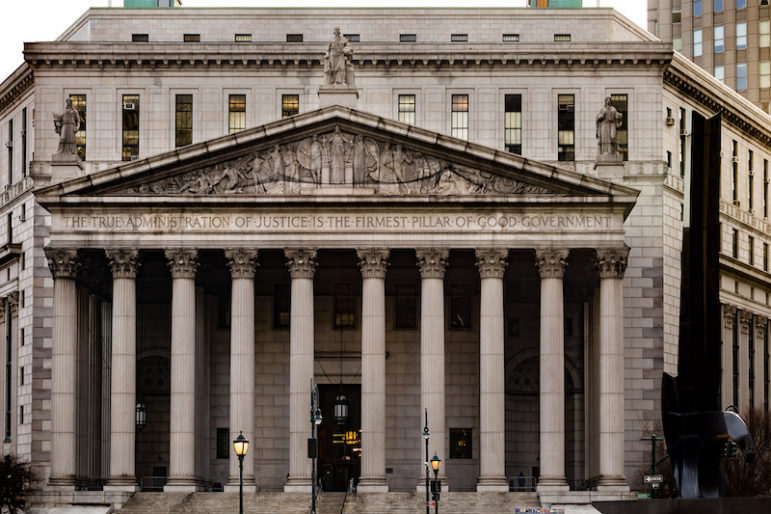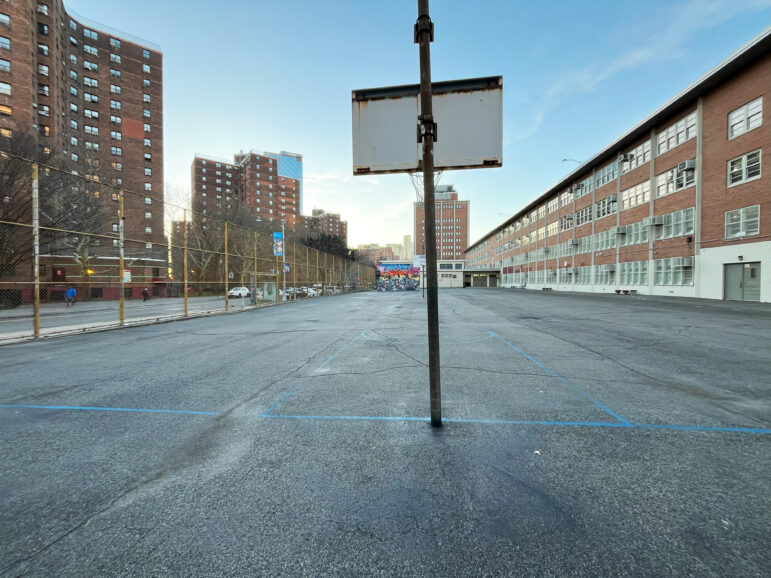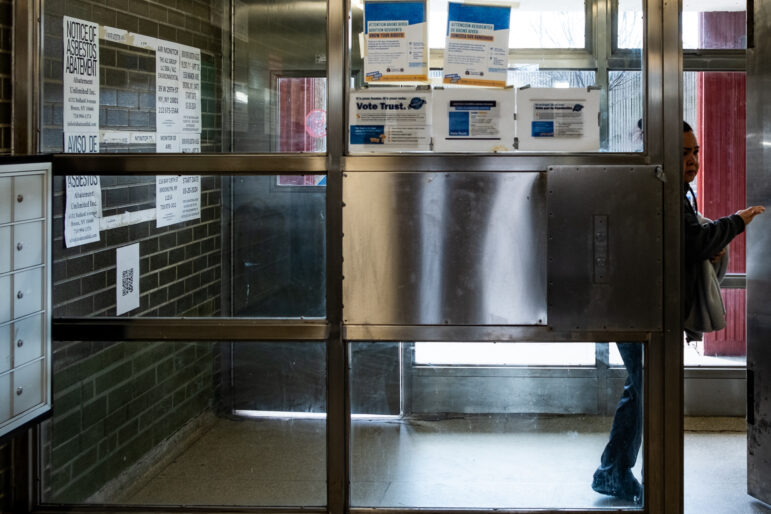The city is seeking public feedback that will help shape its first “Environmental Justice for All Report” planned for next year, looking at issues like water and air quality, waste management and access to green spaces.

Adi Talwar
The East River waterfront in Queens.The New York City’s Mayor’s Office of Climate and Sustainability held a virtual town hall Wednesday evening to discuss environmental justice issues important to New Yorkers—part of a larger effort to identify and address the ways that climate change and environmental issues disproportionately impact certain communities.
The city is also asking for public comment on these issues until Sept. 5, which will culminate in the release of the first “Environmental Justice for All Report” next year.
This effort is a result of Local Laws 60 and 64, which passed in 2017 and mandated that the city create an environmental justice advisory board and produce the report, an online portal and mapping tool and a plan to include equity and environmental justice initiatives into future city-planning decisions.
“Climate justice is the recognition that it’s really the same historically overburdened communities that are most vulnerable to a rapidly changing climate,” said Peggy Shepard, chair of the city’s Environmental Justice Advisory Board, at the meeting.
The board previously identified 16 areas of environmental concerns to focus on, including water and air quality, waste management and access to green spaces. The comment form, found online, asks participants if the concerns are representative of their priorities and lived experiences, what other concerns they have and if they believe the city’s agencies contribute to negative environmental conditions in the participant’s neighborhood.
A resounding issue for meeting participants on Wednesday night was noise, which is included as one of the agency’s 16 prioritized concerns.
“Can you please discuss noise pollution—loud illegal dirt bikes, ATVs, loud music parties on the street every night in my community[?] People cannot sleep at night. This is a public health issue,” Cheryl Miller wrote in the meeting’s Q&A discussion board, which was visible to all nine participating advisory board members.
Tanya Bonner, who chairs the WaHi-Inwood Task Force, said that she’s been trying for over a year to address the growing concern of noise from restaurants, parties, fireworks and other sources in Washington Heights and Inwood. “We have found an uphill battle trying to increase awareness that excessive noise pollution is a public health issue,” she said.
Several participants complained about the East Side Coastal Resiliency Project, a $1.4 billion plan which recently began construction and will raise portions of East River Park. Critics argue the years-long controversial project will further harm communities of color in the East Village and Lower East Side, blocking access to green spaces for some residents and removing trees that will take years to replace.
Other issues participants brought up included a bill being considered in Queens that would allow two waste transfer facilities to increase their capacity after it was reduced a year ago under the Waste Equity Act, and equitable access to air-conditioning.
The last town hall took place in February, during the first period of public comment, which ended in April. The city released a summary report of what it learned from the more than 1,000 New Yorkers who responded. At that time, the biggest concerns of all city residents were garbage, access to parks and green space and noise—many of which were echoed in the comments of Wednesday night’s meeting.
Those in environmental justice areas noted that their biggest concerns were instead access to healthy food, poor indoor air quality and pests.
There were also racial disparities in who responded to the first call for public comment: While white residents make up only about 32 percent of the city’s population, they comprised more than 45 percent of those who submitted public comments. Black New Yorkers make up about 24 percent of the city’s population but only about 10 percent of respondents.
Advisory board member Rebecca Bratspies urged participants at the meeting to fill out the public comment form or to participate via community boards or voting as a way to make their voices heard.
“We’re really eager to hear your thoughts on the draft scope of this report,” she said. “Your comments are what is going to help us ensure that the report is rooted in the real life lived experiences of New Yorkers.”
Comments can be submitted until Sept. 5 online, via email (ej@climate.nyc.gov) or by voice message at 212-788-4144.










4 thoughts on “How Should NYC Address Environmental Justice? Let Officials Know”
East Side Coastal Resiliency Project, a $1.4 billion plan which recently began construction and will raise portions of East River Park.
This is a development project that is forced through by the DeBlasio administration despite it’s damage to the surrounding neighborhoods and their health. The environmental reports are redacted. A plan that was previously approved with community participation was thrown out. The East Village has a high amount of asthma. Thousands of trees will be killed. The replacement trees will not provide canopy for decades. Citizens and school children will be deprived of an outdoor recreation area. Air current from the East River to the surrounding area will be blocked.
Along with the DOT, DeBlasio is also pushing through making the outdoor restaurant sheds permanent. These sheds are not being monitored, are a safety hazard, prevent proper disposal of garbage from the restaurants and are creating a huge rat problem. Then there’s the noise for anyone unfortunate enough to live upstairs from an outdoor area with a liquor license. The DOT’s report on the lack of problem with these outdoor structures is full of misrepresentation an a couple of out and out lies.
You can reach out to your local representatives, such as your city council member, state senator, or U.S. representative, and share your concerns about environmental justice issues in your community.
The environment is an important issue that needs reasonable answers to bring about the best development. There is a serious rat infestation since these sheds are not being checked regularly and so pose a safety risk, prohibit eateries from properly disposing of their trash, and so on.
Addressing environmental justice in New York City requires a multi-faceted approach that involves various stakeholders, including government officials, community organizations, and residents.